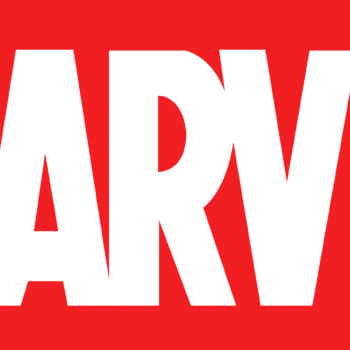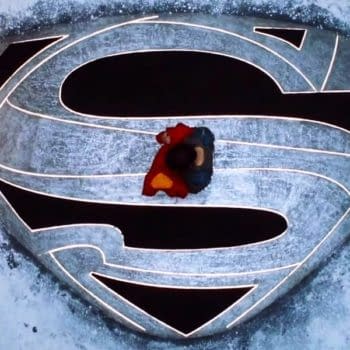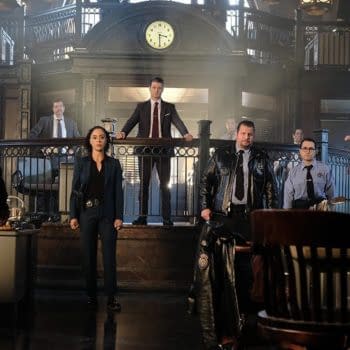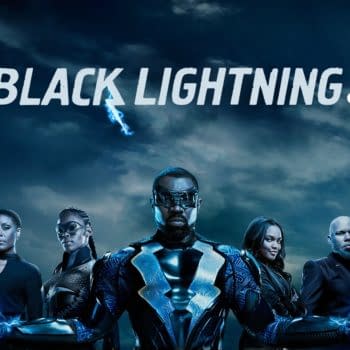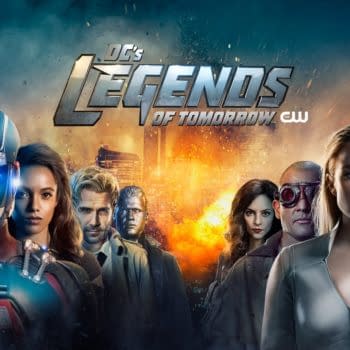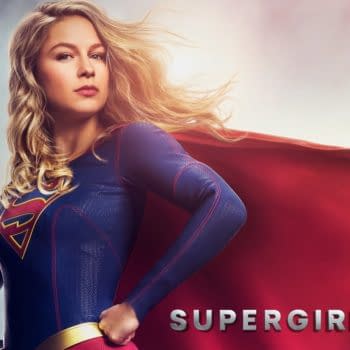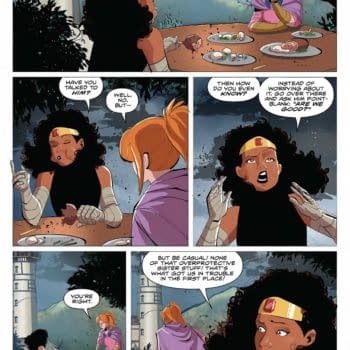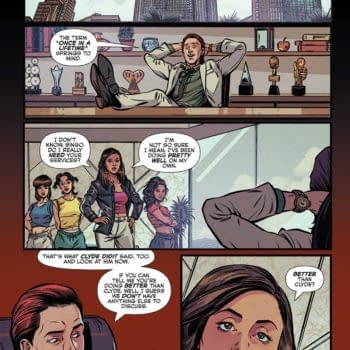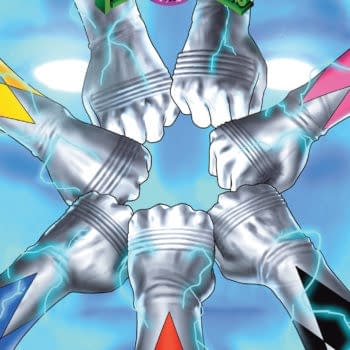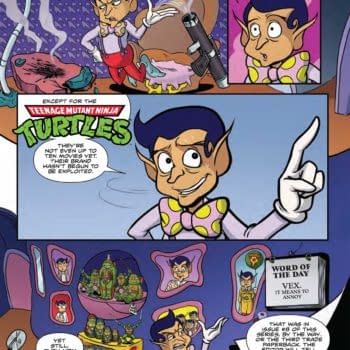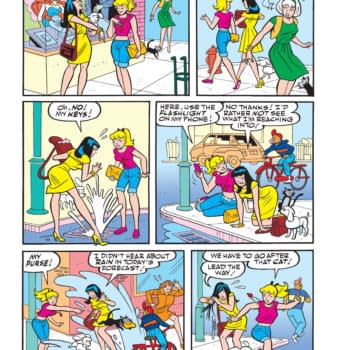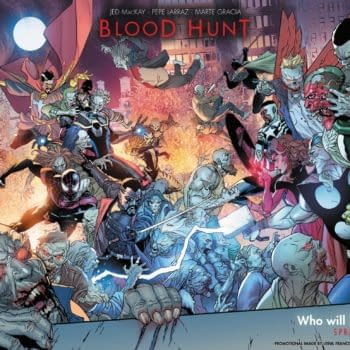Posted in: Comics | Tagged: Comics, doc savage, dynamite, entertainment, justice inc, michael uslan, The Avenger, the shadow
Pulp Fiction – Talking Justice Inc With Michael Uslan
I love the old pulps. The Shadow, The Phantom, The Avenger, Doc Savage… I would search every used bookstore in the area when I was a kid and buy everyone that my allowance would allow. There was something about the stories that clicked with me in the same way comics had. I was lucky enough to write a few prose stories for The Phantom and the Avenger, so when I got the chance to talk to fellow pulp lover Michael Uslan about his upcoming project for Dynamite, Justice Inc… I jumped at the chance.
BLEEDING COOL: Your new series focuses on three classic pulp heroes who have each had a different level of popularity. Starting with The Shadow, why do you think this character over the other two resonated so well with readers? What draws people to like a hero with such a dark history?
MICHAEL USLAN: Men of mystery have an honored place in our folklore and pop culture. From Ancient mythology to Robin Hood, from The Scarlet Pimpernel to Zorro, these classic heroes and tales heavily influenced the nature of the pulps and dramatic radio in the first half of the 20th Century: The Shadow, The Lone Ranger, The Green Hornet, The Green Lama, The Whisperer, The Whistler, The Black Bat, and the list goes on. And let's not forget the newspaper comic strips like The Phantom. It was a time dominated by a Depression, World Wars of unimaginable destruction and horrors, and on the home front bold public enemies shooting up America from the heartland to its cities. It was a dark time of dark evil forces and the public thirsted for heroes willing to take that darkness and and the violence it spawned and turn it against the evil-doers. Thus was born The Shadow and the pulp reading, radio listening, serial watching, comic book embracing audiences devoured it all, rooting on the man who was judge, jury and executioner!

MU: When Siegel and Shuster borrowed so heavily from Doc Savage in their creation of Superman, they also wound up with the challenge of how do you keep audiences interested in a character so all-powerful. Jerry Siegel would fall into the same potential trap in his creation of The Spectre. For Doc Savage, the answer is easier. He may be a human operating at the highest level a human physically and mentally can in real life, but he was still a human. He could still err, could still rush to judgment, could still have human foibles and socialization issues. Being the strongest and smartest doesn't mean you know how to ask out a woman or behave in social situations. And Superman never had the "brothers"- the companionship and support system Doc developed.
BC: The Avenger starts off as almost a Doc Savage clone but then is changed… both physically and mentally… by the loss of his wife and daughter. He is more like a modern day character than the other two. Why do you think he didn't garner quite the following as the other two?
MU: Primarily, I think it was due to market issues and cultural changes that must be considered in the context of their times. By the time The Avenger premiered in 1939, Europe was already at war. No matter how much America wanted to pretend it was immune to this conflict, it was becoming chillingly clear it would have no escape. Comic book super-heroes had arrived on the scene just a year before and a new industry was quickly putting pressure on the good ol' pulps and pulp heroes. A new kind of hero… More colorful… More powerful… More escapist in its entertainment value… Burst onto the scene. Doc and The Shadow and The Avenger were eclipsed by Superman, Batman, Captain Marvel, Flash, Green Lantern, Captain America and The Hyman Torch. The newsstands were being flooded by hundreds of titles of comic books in addition to the proliferation of pulp title cannibalizing each others' sales. The bottom line? The Avenger simply got too late a start in the marketplace.

MU: Neither their personalities, ideologies, or methodologies match up. This is a vey shaky, very tenuous confederation. Do they learn to respect each other, albeit perhaps begrudgingly? Yes. Do they like each other? I don't think so. But by the end of this story arc… Who knows?
BC: Each of these characters regularly works with a network of followers. Which of those followers play a role in this series and will they mix and match or stay in their own little groups?
MU: I always hated when movie studio execs insisted on cramming multiple heroes and villains with multiple costumes and vehicles into a movie supposed to be about a singular super -hero. It never allows the protagonist sufficient screen time to build character arcs, tone, or a worthy plot. In a six issue mini-series comprising a graphic novel in three acts, there is room for three heroes, but if each one brings along his network of agents, it detracts too heavily from the spotlight needing to be on our three stars, causing too great a sacrifice of screen time for our heroes. Minor Spoiler: Monk (a shocked Monk, actually); Margo Lane; and the real Lamont Cranston make an appearance. And keep an eye out for Pat Savage.

MU: It's so much fun! It's pre-Batman Batman; noir with Bogart and Cagney and characters like Lorre, Greenstreet, and Veidt; a shot of purple prose; bad girls; hard-boiled cops like Dick Tracy and insidious bad guys like Fu Manchu; and moody, atmospheric sets lost to time today from Chinatown to "da docks" and from the bright lights of Broadway to the red lights of Hell's Kitchen.
BC: What is the one thing you'd like the readers to take away from this series when all is said and done?
MU: First, sometimes it takes a greater external threat to drive enemies to work together for a greater good.
Second, who is so perfect he can judge others? There is room for passionate disagreement without judgment.
Third, crime does not pay!
And lastly, was Street & Smith out of its mind not to ever team-up their trinity of heroes in one pulp story or comic book adventure?!!?



